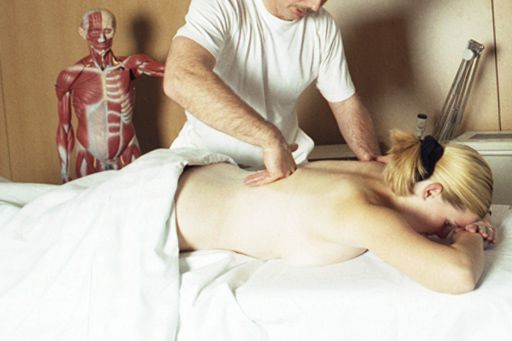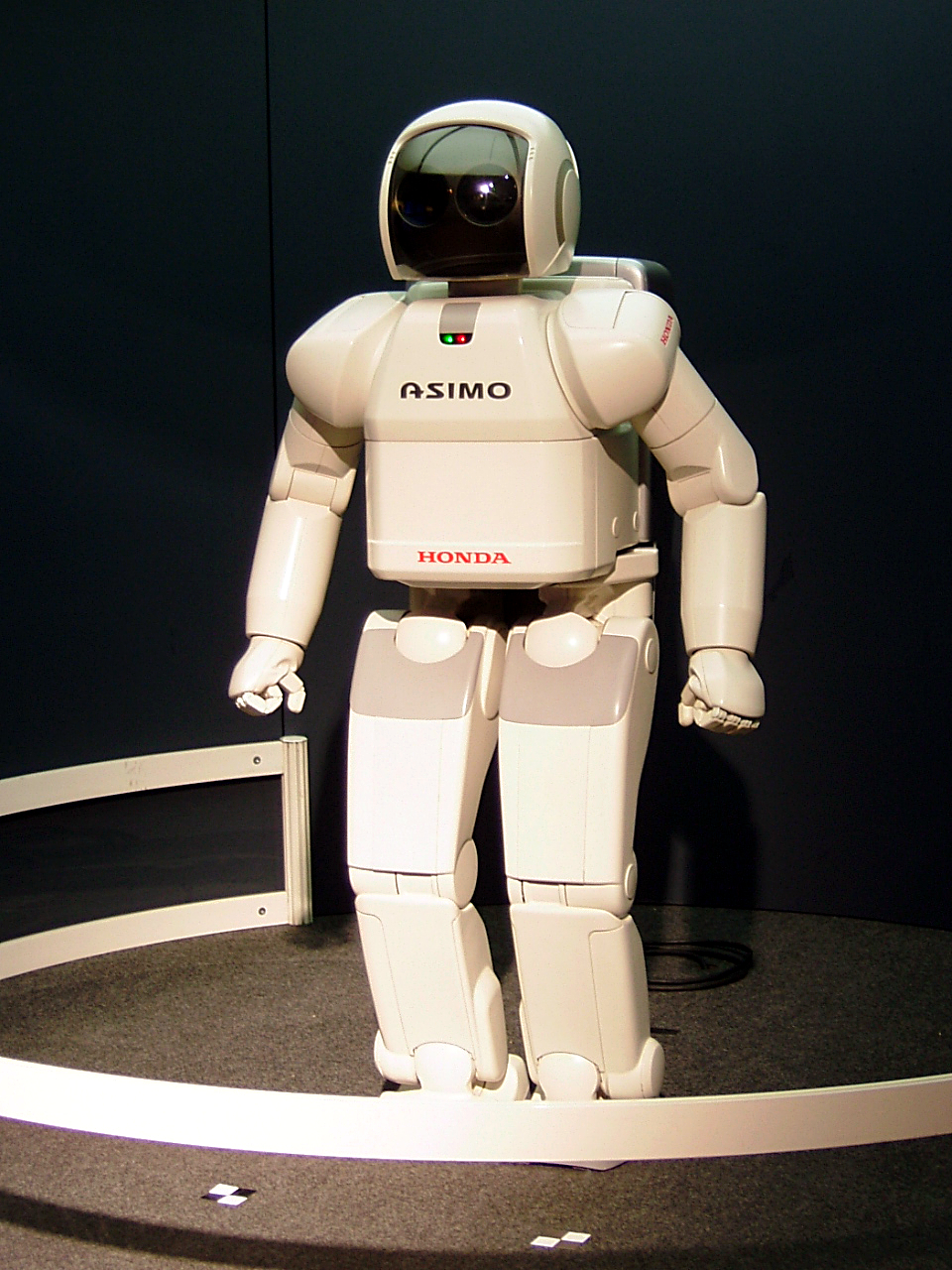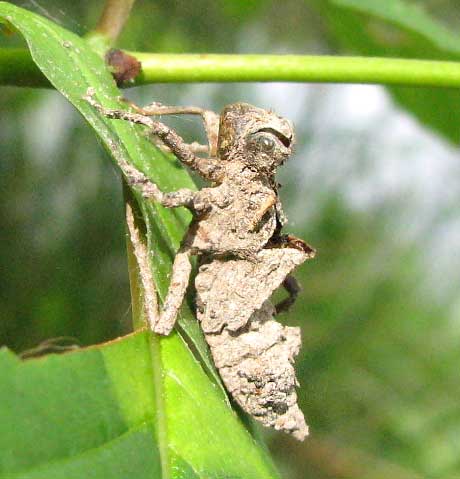|
LOPES (exoskeleton)
The goal of the LOPES project (LOwer-extremity Powered ExoSkeleton) is to design and implement a gait rehabilitation robot for treadmill training. The target group consists of people who have had a stroke and have impaired motor control. The main goals of LOPES are: *Reduction of the physical load on the therapist / patient; *More efficient gait training for stroke patients; *Selective support of gait functions; *Therapist stays in charge of high-level decisions. The mechanical construction should offer assistance in leg movements in the forward direction and in keeping lateral balance. Within the LOPES project, it has been decided to realize this by connecting the limbs of the patient to an exoskeleton An exoskeleton () . is a skeleton that is on the exterior of an animal in the form of hardened integument, which both supports the body's shape and protects the internal organs, in contrast to an internal endoskeleton (e.g. human skeleton, that ... so that robot and patient ... [...More Info...] [...Related Items...] OR: [Wikipedia] [Google] [Baidu] |
Physical Therapy
Physical therapy (PT), also known as physiotherapy, is a healthcare profession, as well as the care provided by physical therapists who promote, maintain, or restore health through patient education, physical intervention, disease prevention, and health promotion. Physical therapist is the term used for such professionals in the United States, and physiotherapist is the term used in many other countries. The career has many specialties including musculoskeletal, orthopedics, cardiopulmonary, neurology, endocrinology, sports medicine, geriatrics, pediatrics, women's health, wound care and electromyography. PTs practice in many settings, both public and private. In addition to clinical practice, other aspects of physical therapy practice include research, education, consultation, and health administration. Physical therapy is provided as a primary care treatment or alongside, or in conjunction with, other medical services. In some jurisdictions, such as the United Kin ... [...More Info...] [...Related Items...] OR: [Wikipedia] [Google] [Baidu] |
Robot
A robot is a machine—especially one Computer program, programmable by a computer—capable of carrying out a complex series of actions Automation, automatically. A robot can be guided by an external control device, or the robot control, control may be embedded within. Robots may be constructed to evoke Humanoid robot, human form, but most robots are task-performing machines, designed with an emphasis on stark functionality, rather than expressive aesthetics. Robots can be autonomous robot, autonomous or semi-autonomous and range from humanoids such as Honda's ''Advanced Step in Innovative Mobility'' (ASIMO) and TOSY's ''TOSY Ping Pong Playing Robot'' (TOPIO) to industrial robots, robot-assisted surgery, medical operating robots, patient assist robots, dog therapy robots, collectively programmed Swarm robotics, ''swarm'' robots, UAV drones such as General Atomics MQ-1 Predator, and even microscopic Nanorobotics, nanorobots. By mimicking a lifelike appearance or automating mo ... [...More Info...] [...Related Items...] OR: [Wikipedia] [Google] [Baidu] |
Treadmill
A treadmill is a device generally used for walking, running, or climbing while staying in the same place. Treadmills were introduced before the development of powered machines to harness the power of animals or humans to do work, often a type of mill operated by a person or animal treading the steps of a treadwheel to grind grain. In later times, treadmills were used as punishment devices for people sentenced to hard labour in prisons. The terms ''treadmill'' and ''treadwheel'' were used interchangeably for the power and punishment mechanisms. More recently, treadmills have instead been used as exercise machines for running or walking in one place. Rather than the user powering a mill, the device provides a moving platform with a wide conveyor belt driven by an electric motor or a flywheel. The belt moves to the rear, requiring the user to walk or run at a speed matching the belt. The rate at which the belt moves is the rate of walking or running. Thus, the speed of running may ... [...More Info...] [...Related Items...] OR: [Wikipedia] [Google] [Baidu] |
Stroke
Stroke is a medical condition in which poor cerebral circulation, blood flow to a part of the brain causes cell death. There are two main types of stroke: brain ischemia, ischemic, due to lack of blood flow, and intracranial hemorrhage, hemorrhagic, due to bleeding. Both cause parts of the brain to stop functioning properly. Signs and symptoms of stroke may include an hemiplegia, inability to move or feel on one side of the body, receptive aphasia, problems understanding or expressive aphasia, speaking, dizziness, or homonymous hemianopsia, loss of vision to one side. Signs and symptoms often appear soon after the stroke has occurred. If symptoms last less than 24 hours, the stroke is a transient ischemic attack (TIA), also called a mini-stroke. subarachnoid hemorrhage, Hemorrhagic stroke may also be associated with a thunderclap headache, severe headache. The symptoms of stroke can be permanent. Long-term complications may include pneumonia and Urinary incontinence, loss of b ... [...More Info...] [...Related Items...] OR: [Wikipedia] [Google] [Baidu] |
Motor Control
Motor control is the regulation of movements in organisms that possess a nervous system. Motor control includes conscious voluntary movements, subconscious muscle memory and involuntary reflexes, as well as instinctual taxes. To control movement, the nervous system must integrate multimodal sensory information (both from the external world as well as proprioception) and elicit the necessary signals to recruit muscles to carry out a goal. This pathway spans many disciplines, including multisensory integration, signal processing, coordination, biomechanics, and cognition, and the computational challenges are often discussed under the term sensorimotor control. Successful motor control is crucial to interacting with the world to carry out goals as well as for posture, balance, and stability. Some researchers (mostly neuroscientists studying movement, such as Daniel Wolpert and Randy Flanagan) argue that motor control is the reason brains exist at all. Neural control ... [...More Info...] [...Related Items...] OR: [Wikipedia] [Google] [Baidu] |
Physical Therapy
Physical therapy (PT), also known as physiotherapy, is a healthcare profession, as well as the care provided by physical therapists who promote, maintain, or restore health through patient education, physical intervention, disease prevention, and health promotion. Physical therapist is the term used for such professionals in the United States, and physiotherapist is the term used in many other countries. The career has many specialties including musculoskeletal, orthopedics, cardiopulmonary, neurology, endocrinology, sports medicine, geriatrics, pediatrics, women's health, wound care and electromyography. PTs practice in many settings, both public and private. In addition to clinical practice, other aspects of physical therapy practice include research, education, consultation, and health administration. Physical therapy is provided as a primary care treatment or alongside, or in conjunction with, other medical services. In some jurisdictions, such as the United Kin ... [...More Info...] [...Related Items...] OR: [Wikipedia] [Google] [Baidu] |
Patient
A patient is any recipient of health care services that are performed by Health professional, healthcare professionals. The patient is most often Disease, ill or Major trauma, injured and in need of therapy, treatment by a physician, nurse, optometrist, dentist, veterinarian, or other health care provider. Etymology The word wikt:patient, patient originally meant 'one who suffers'. This English noun comes from the Latin word , the present participle of the deponent verb, , meaning , and akin to the Ancient Greek, Greek verb ( ) and its cognate noun (). This language has been construed as meaning that the role of patients is to passively accept and tolerate the suffering and treatments prescribed by the healthcare providers, without engaging in Shared decision-making in medicine, shared decision-making about their care. Outpatients and inpatients An outpatient (or out-patient) is a patient who attends an Outpatient clinic (hospital department), outpatient clinic with no ... [...More Info...] [...Related Items...] OR: [Wikipedia] [Google] [Baidu] |
Gait (human)
A gait is a manner of Limb (anatomy), limb movements made during Animal locomotion, locomotion. Human gaits are the various ways in which humans can move, either naturally or as a result of specialized training. Human gait is defined as Bipedalism, bipedal Bipedal gait cycle, forward propulsion of the center of gravity of the human body, in which there are Sinuosity, sinuous movements of different segments of the body with little energy spent. Various gaits are characterized by differences in limb movement patterns, overall velocity, forces, kinetic and potential energy cycles, and changes in contact with the ground. Classification Human gaits are classified in various ways. Each gait can be generally categorized as either natural (one that humans use instinctively) or trained (a non-instinctive gait learned via training). Examples of the latter include hand walking and specialized gaits used in martial arts. Gaits can also be categorized according to whether the person remains ... [...More Info...] [...Related Items...] OR: [Wikipedia] [Google] [Baidu] |
High-level
High-level and low-level, as technical terms, are used to classify, describe and point to specific goals of a systematic operation; and are applied in a wide range of contexts, such as, for instance, in domains as widely varied as computer science and business administration. High-level describe those operations that are more abstract and general in nature; wherein the overall goals and systemic features are typically more concerned with the wider, macro system as a whole. Low-level describes more specific individual components of a systematic operation, focusing on the details of rudimentary micro functions rather than macro, complex processes. Low-level classification is typically more concerned with individual components within the system and how they operate. Differences Due to the nature of complex systems, the high-level description will often be completely different from the low-level one; and, therefore, the (different) descriptions that each deliver are consequent up ... [...More Info...] [...Related Items...] OR: [Wikipedia] [Google] [Baidu] |
Exoskeleton
An exoskeleton () . is a skeleton that is on the exterior of an animal in the form of hardened integument, which both supports the body's shape and protects the internal organs, in contrast to an internal endoskeleton (e.g. human skeleton, that of a human) which is enclosed underneath other soft tissues. Some large, hard and non-flexible protective exoskeletons are known as mollusc shell, shell or armour (anatomy), armour. Examples of exoskeletons in animals include the arthropod exoskeleton, cuticle skeletons shared by arthropods (insects, chelicerates, myriapods and crustaceans) and tardigrades, as well as the corallite, skeletal cups formed by hardened secretion of stony corals, the test (biology), test/tunic of sea squirts and sea urchins, and the prominent mollusc shell shared by snails, bivalvia, clams, tusk shells, chitons and nautilus. Some vertebrate animals, such as the turtle, have both an endoskeleton and a turtle shell, protective exoskeleton. Role Exoskeletons c ... [...More Info...] [...Related Items...] OR: [Wikipedia] [Google] [Baidu] |
Journal Of Rehabilitation Research And Development
The ''Journal of Rehabilitation Research and Development'' was a peer-reviewed open access medical journal published by the Rehabilitation Research and Development Service of the Veterans Health Administration Office of Research and Development. It covered research on rehabilitation medicine. It published ten issues in print and electronic formats each year. The journal's website contains the full archive dating back to 1964. The journal was established in 1964 as the ''Bulletin of Prosthetics Research'', obtaining its latest name in 1983. In 2017, the journal announced that it would cease publication, to be replaced with a community organised through the open access publisher PLOS. Abstracting and indexing The journal has been abstracted and indexed by: According to the ''Journal Citation Reports'', the journal had an impact factor The impact factor (IF) or journal impact factor (JIF) of an academic journal is a type of journal ranking. Journals with higher impact factor v ... [...More Info...] [...Related Items...] OR: [Wikipedia] [Google] [Baidu] |




